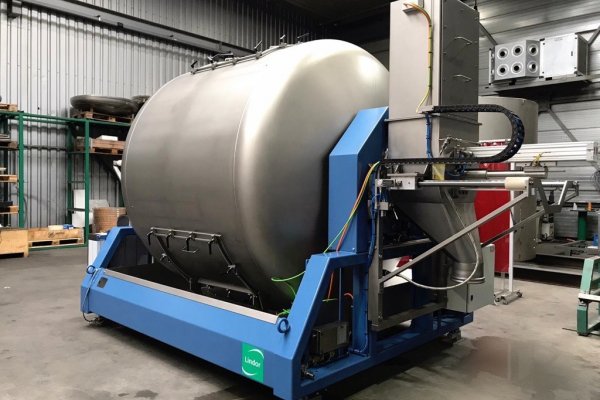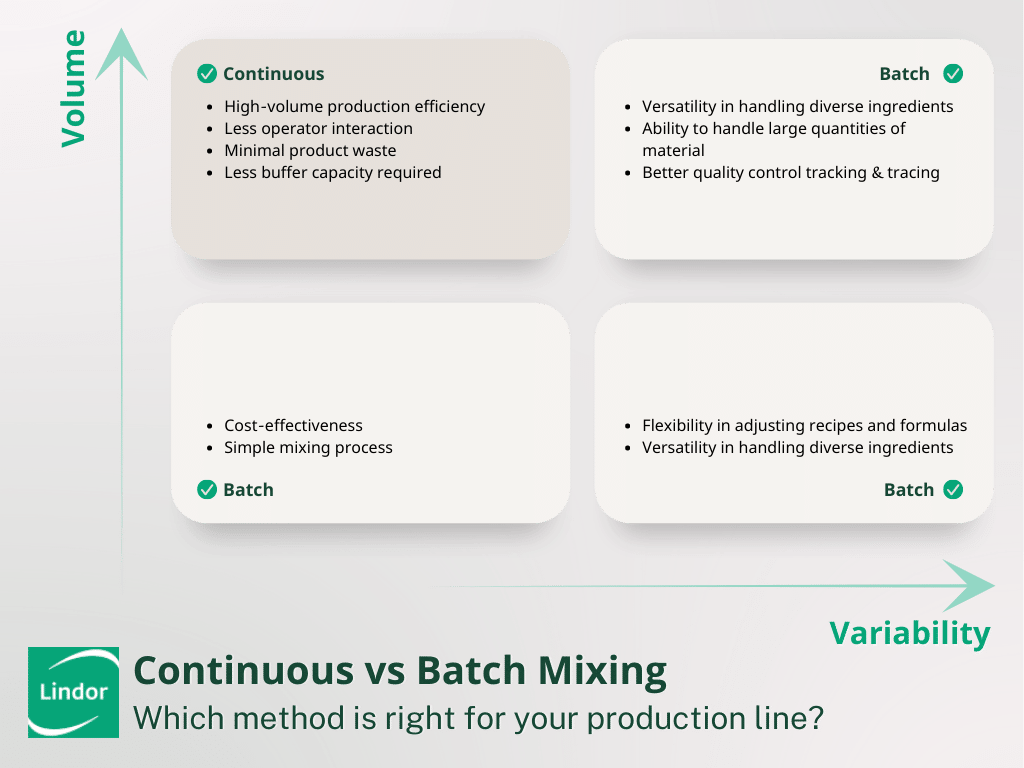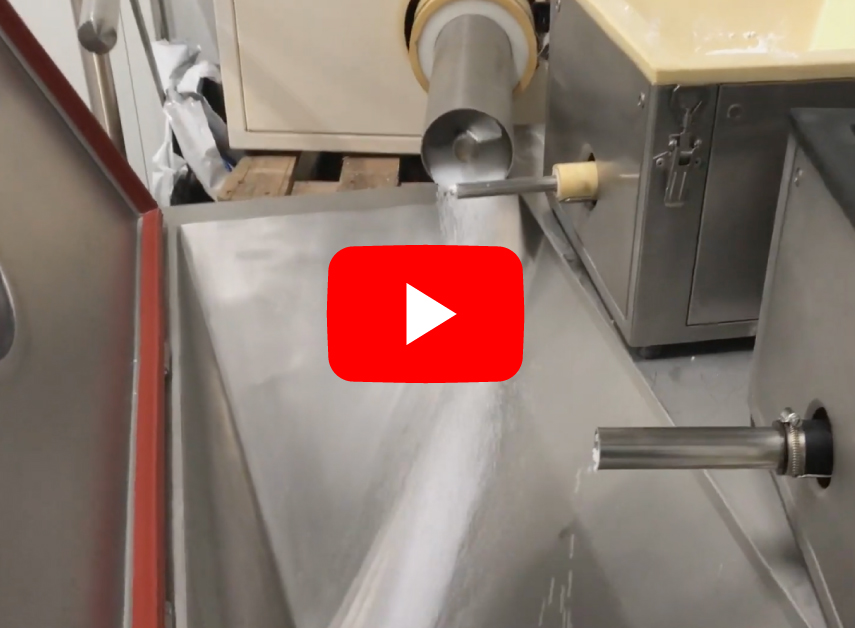Continuous Mixing Made Simple: What You Need to Know
Is a continuous mixer the right fit for your production line?
When looking for the right mixer to complete your new production line or to update an existing one, you may have come across the option of continuous mixing. Naturally, you may be wondering what the benefits are and if a continuous mixer is most appropriate for your production line.
This short article will cover a good chunk of your questions and direct you to where you can get further help with your equipment purchasing decision.

What is continuous mixing?
Mixing can be done in two ways: through batch mixing or continuous mixing.
Batch mixing involves measuring a set quantity of ingredients and then processing it through the mixer. This is repeated for each batch, with the mixer being filled and emptied each time.
Continuous mixing involves processing the ingredients in a continuous stream without any starting and stopping. The mixer operates continuously, with the ingredients being fed into the mixing chamber and then being continuously discharged.
The continuous mixing process eliminates the need for separate steps such as filling, mixing, and emptying, streamlining the production process and increasing efficiency.
Batch mixing vs continuous mixing systems in practice
By far, most powder mixing processes are executed with a batch mixer. However, continuous mixing offers advantages in certain circumstances. To understand these circumstances, consider your needs regarding production capacity, preparation, flexibility, and quality tracking and tracing.
Production capacity
The continuous mixing process can allow for a higher production capacity compared to batch mixing. This is because there is no additional time spent on filling and emptying the mixer, enabling more to be mixed per hour. This system is suitable for large-scale operations where a high production rate is needed, and minimal downtime is essential.
For example, in a batch process of 500 kg, which takes 1 minute to fill the mixer, 3 minutes to mix, and 2 minutes to empty, the total processing time is 6 minutes, resulting in a mixing capacity of 5000 kg per hour. However, with continuous mixing under the same conditions, 500 kg of mixed product is produced every 4 minutes, leading to a production capacity of 7,500 kg per hour- an increase of 50% more capacity in the same mixer.
There are, however, fully automated batch plants in which the time-saved difference becomes insignificant. In these cases, the choice between the mixer models depends entirely on the setup of the production line and personal advice from a process engineer can be requested here.
Preparation
The process of preparing the mixture requires the weighing of individual ingredients, whether it is a batch or a continuous process. In the latter, the weighing occurs continuously and is monitored by dosing equipment to ensure that the correct proportions are added to the mixer in real time. These upstream systems often require a higher investment compared to batch mixing due to continuous monitoring.
Flexibility
Batch mixing offers greater flexibility as the recipe can be altered with each batch, excluding the cleaning process. However, continuous mixing can take some time to stabilize and may produce a few kilograms that don’t meet the specifications at the beginning. This process is best suited for operations that run continuously for extended periods but may not be as ideal for applications that require variations and adaptability.
Quality tracking & tracing
Batch processing has the benefit of having a defined composition, process parameters, and time for each batch, making quality tracking and tracing easier to organize.
However, there is a slight risk of disruptions such as human error or equipment malfunction with each batch. In contrast, continuous processing operates without interruption, reducing, however low, the likelihood of disruptions.
Types of continuous mixing processes
There are two types of continuous mixing processes: plug flow and average residence time.
In plug flow, each particle spends nearly equal time in the mixer and only mixes with particles that enter at the same time, not with those that come before or after.
On the other hand, average residence time mixing has particles spending varying amounts of time in the mixer, with the average residence time being adjusted to achieve a homogeneous mixture. Lindor mixers employ the average residence time process.
Lindor continuous mixing technology
Continuous mixing equipment from Lindor is being used in continuous mixing plants around the world for a wide range of applications, from food ingredients to plastics to fertilizers to battery powders.
The Lindor KONTI Mixer is a specially designed continuous horizontal mixer that operates on the unique gentle mixing technology provided in all Lindor machines. The benefit of this technology is the protection of particle integrity throughout the continuous mixing cycle. Keeping even the most delicate particles intact and free of dust leads to a maximum output volume and top-notch quality.
Lindor KONTI Mixers range in size from a capacity of 500 liters up to 25000 liters of product within the drum at a time. The KONTI Mixer is fitted with a special ingredients metering valve in the outlet which is operated by a servo system regulating the outflow. Extra features, like liquid injection systems, can be added to the mixer bringing further efficiency to your production line through the multi-functionality of the machine.
We can provide a complete package with a control panel or provide software engineering assistance to integrate the mixer into an established system.
Get expert advice today
Whether you’re looking for a new mixer for your production line or upgrading an existing one, continuous mixing can be a great solution for large-scale operations with a high production rate. Consider your specific needs and get expert advice from Lindor engineers to determine if continuous mixing is the right choice for you.


